Moniek Bloks's Blog, page 54
March 23, 2024
Book News Week 13
Book News Week 13 – 25 March – 31 March 2024

Power and Glory: Elizabeth II and the Rebirth of Royalty
Hardcover – 28 March 2024 (UK)
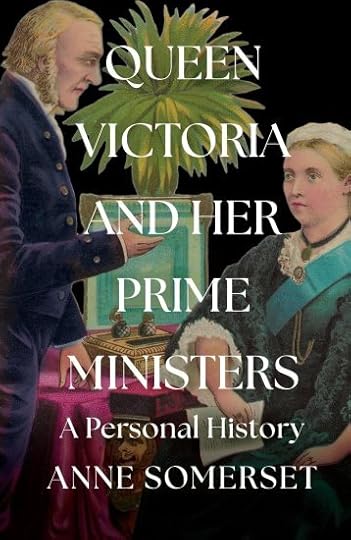
Queen Victoria and her Prime Ministers: A Personal History
Kindle Edition – 28 March 2024 (UK & US)
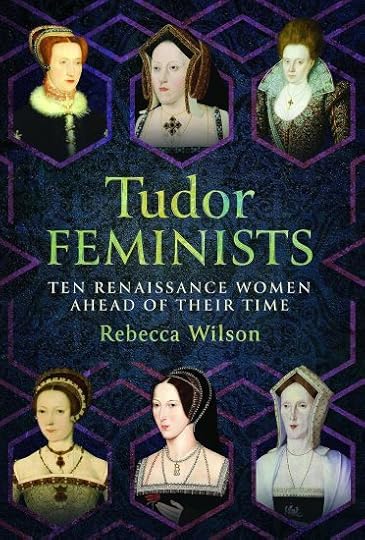
Tudor Feminists: 10 Renaissance Women Ahead of their Time
Hardcover – 30 March 2024 (US)
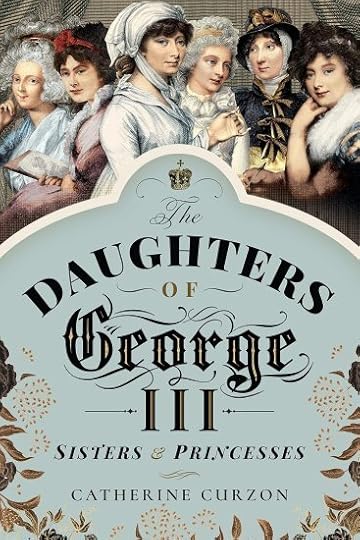
The Daughters of George III: Sisters and Princesses
Paperback – 30 March 2024 (UK)
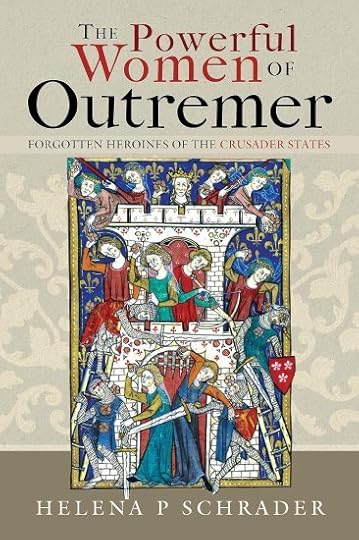
The Powerful Women of Outremer: Forgotten Heroines of the Crusader States
Hardcover – 30 March 2024 (UK)
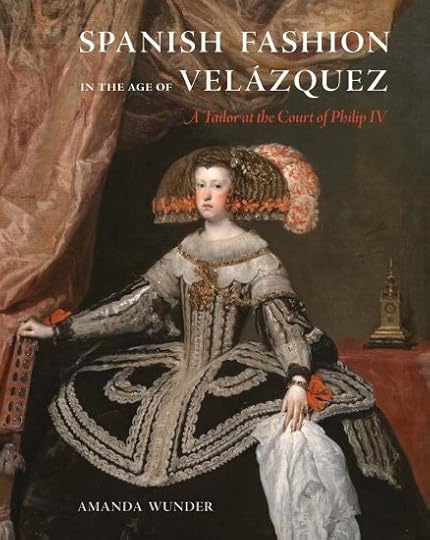
Spanish Fashion in the Age of Velázquez: A Tailor at the Court of Philip IV
Hardcover – 26 March 2024 (US)

House of Lilies: The Dynasty That Made Medieval France
Hardcover – 28 March 2024 (UK)
The post Book News Week 13 appeared first on History of Royal Women.
March 22, 2024
The Grave of Empress Elisabeth’s disgraced niece Countess Marie Larisch von Moennich
Countess Marie Larisch von Moennich was born as Marie Louise Elizabeth Mendel on 24 February 1858 as the illegitimate daughter of Duke Ludwig Wilhelm in Bavaria and the actress Henriette Mendel. When Henriette fell pregnant for the second time, she and Ludwig Wilhelm contracted a morganatic marriage. They were married on 28 May 1859, shortly after Ludwig Wilhelm officially renounced any succession rights. Henriette was created Baroness von Wallersee by the King of Bavaria shortly before the wedding, making Marie a Baroness von Wallersee as well.
Her aunt, Empress Elisabeth of Austria, would later befriend the young Marie, and at the age of 16, Elisabeth took her under her wing and invited her to court. Young Marie had been all too willing to flirt with her young cousin Rudolf, and perhaps to put an end to Marie’s ambitions, Elisabeth arranged her marriage to Count Georg Larisch von Moennich. Unfortunately, the marriage was soon off to a bad start, and the couple was horribly mismatched. They went to live mainly at Castle Pardubitz, where Marie gave birth to her first two children: Franz-Joseph in 1878 and Marie Valerie in 1879.
Marie is perhaps best remembered in history for the role she played in the tragedy at Mayerling. Marie, close as she was to the Imperial Family, knew where the skeletons were buried, and after gambling away her husband’s small fortune, she used this as leverage. Eager to keep his cousin quiet, Rudolf often paid off her debts. Nevertheless, in this sordid arrangement, Marie also found herself introducing her cousin to new lovers. Marie knew Baroness Helene Vetsera and her family well – she had even embarked on an affair with Helene’s brother Heinrich, as his regiment was conveniently stationed near the Larisch estate. Two of her children, Marie Henriette (born 1884) and Heinrich Georg (born 1886), were likely fathered by him rather than her husband.
Helene had once been Rudolf’s lover; now it seemed that her daughter was to take her place, and Marie was to facilitate this. It was only after the tragedy had happened that Marie claimed that Mary had sought out Rudolf on her own and that the relationship had surprised her. It all began in the spring of 1888. Marie would collect the 17-year-old Mary from her mother’s residence every few days, ostentatiously to take her shopping or to the Prater, but they always ended up with Rudolf. As the relationship continued, Mary and Rudolf became less discrete. Even Marie found it distasteful and told her, “I think you display very questionable taste in flaunting yourself.”1
The end came in the early hours of 30 January. Crown Prince Rudolf had first shot and killed Mary before turning the gun on himself. The court immediately went into damage control mode, and many letters, including to and from Marie, were taken. Despite the precautions, the rumour that Rudolf had killed himself and Mary was soon circulating, and Marie could do nothing but worry. On 5 February, a group of officials came to question her at her hotel suite. She tried to deny everything, but her letters had already been located. When Marie later went to see her aunt, Empress Elisabeth, she was turned away, and Elisabeth never spoke to Marie again. Marie was forbidden from ever appearing at court again. Marie later wrote that Elisabeth “made use of me, and she threw me aside without a regret.”2
Now a social pariah, Marie also abandoned her lover and transferred her affections to Karl-Ernst von Otto-Kreckwitz and gave birth to his son Friedrich Karl in 1894. Without her connections to the Imperial court, her husband soon saw no use for Marie, and they divorced in 1896. Just one year later, Marie left Karl-Ernst and married a musician named Otto Brucks. He became an alcoholic. With her money running out, Marie decided to cash in by writing about her Imperial relatives. Marie was widowed in 1914.
Click to view slideshow.In 1924, she married for a third time to an American doctor. The marriage was miserable, and she worked as a maid in New Jersey before eventually returning to Germany. She died there on 4 July 1940 at the age of 82 – impoverished. She was buried in the Ostfriedhof in Munich beside her father and her son Friedrich Karl.
Her grave was unmarked for many years, and it only received the simple wooden cross with her name on it in 2012.
The post The Grave of Empress Elisabeth’s disgraced niece Countess Marie Larisch von Moennich appeared first on History of Royal Women.
March 21, 2024
The Cullinan III and IV Brooch
The Cullinan III and IV Brooch consists of “a pear-shaped drop and a square-cut brilliant, linked together in fine pierced collet and claw settings.”1
Embed from Getty ImagesThe brooch is formed of the third and fourth largest stones of the largest diamond ever found. The Cullinan diamond was offered to King Edward VII as a token of “loyalty and attachment of the people of the Transvaal to His Majesty’s Person and Throne.”2
Embed from Getty ImagesThe uncut stone was sent to the diamond cutter Asscher in Amsterdam, and he produced nine polished stones, 96 small brilliants and nine carats of rough ends. The Cullinan I and II were reserved for King Edward VII. Asscher had kept the stones III to V and VII-IX, together the brilliants and rough ends as a fee for the cutting and polishing. Every stone was then acquired by the South African Government and given to Queen Mary in 1910. She had Cullinan III and IV temporarily set in her new crown for the coronation of 1911. She also had the Delhi Durbar Tiara adapted to take either or both of the stones. However, she mostly wore the stones hooked together as a brooch.
Embed from Getty ImagesQueen Elizabeth II inherited the brooch in 1953, and it was then famously referred to as “Granny’s Chips.”3
The post The Cullinan III and IV Brooch appeared first on History of Royal Women.
March 19, 2024
Zhang Qijie – The whipped and deposed Empress
The Jiajing Emperor of the Ming Dynasty had four Empresses. Yet, each of them suffered under his abuse and met a tragic end. One of them was Empress Zhang Qijie. Zhang Qijie was his second Empress and the only Empress that the Jiajing Emperor deposed. She reigned alongside him as Empress of China for six years. When she interceded for someone he greatly disliked, he beat her and deposed her. Empress Zhang Qijie’s story is truly tragic because she suffered from her abusive husband.
Empress Zhang Qijie’s birth date is unknown. She was the daughter of Zhang Ji, who was an imperial guard. Her mother was Lady Xue. Zhang Qijie was said to be very beautiful, but she was not well-learned.[1] In 1526, she became a concubine to the Jiajing Emperor. The Jiajing Emperor and Empress Chen had a strained relationship.[2] The Jiajing Emperor began to favour Consort Zhang Qijie.[3] In 1528, a horrible event happened that made Consort Zhang Qijie become the next Empress.
One day in 1528, Consort Zhang Qijie and Consort Fang (who would become the third Empress of the Jiajing Emperor) served tea to the pregnant Empress Chen and the Jiajing Emperor. When the Jiajing Emperor accepted the tea his consorts served him, he stared at them lustfully.[4] Empress Chen was furious when she noticed that the Jiajing Emperor was lusting after other women in her presence.[5] She threw her teacup to the ground and stood up to leave.[6] The Jiajing Emperor was enraged that Empress Chen was displeased with his behaviour.[7] He kicked Empress Chen several times, causing her to have a miscarriage.[8] Empress Chen never recovered and died a month later.[9]
The Jiajing Emperor decided to appoint Zhang Qijie as his next Empress.[10] However, Zhang Qijie did not want to be his Empress because she was afraid that he would treat her like Empress Chen.[11] Yet, Zhang Qijie realized there was no choice and was invested as Empress of China.[12] Zhang Qijie did not enjoy the Empress position.[13] She was always afraid that she would meet the same fate as her predecessor.[14] Unfortunately, it would later prove to be true.
Empress Zhang Qijie participated in rituals and ceremonies with the Jiajing Emperor.[15] Gradually, the Jiajing Emperor grew disappointed with her because she still had not given him a son.[16] He also disapproved of her close relationship with his aunt, Empress Dowager Zhang (also known as Empress Xiaochengjing), whom he greatly disliked.[17] This would cause Empress Zhang Qijie’s swift and sudden downfall.
In January of 1534, the Jiajing Emperor convicted Empress Dowager Zhang’s younger brother of treason to eliminate his aunt’s family.[18] Empress Zhang Qijie interceded on behalf of his aunt’s younger brother.[19] Emperor Jiajing was furious that Empress Zhang Qijie sided with Empress Dowager Zhang and not with him.[20] On 19 January 1534, the Jiajing Emperor deposed Empress Zhang Qijie.[21] He stripped off her crown dress.[22] Then, he whipped her and sent her to the cold palace.[23] She was the Empress of China for six years.[24] The deposed Empress Zhang died lonely and unhappy three years later in 1537.[25] She had a simple and hasty funeral.[26] She was buried without the rites of an Empress.[27]
Zhang Qijie was right to fear the Empress position. Like her predecessor, she also suffered a tragic fate. The Jiajing Emperor once showered her with favour and made her Empress of China. However, he was disappointed with her because she did not give him a son. When she interceded with his aunt’s brother, he deposed her and whipped her. Empress Zhang Qijie could not control the events in her life. It is no wonder why she hated being Empress of China.
Sources:
Dardess, J. W. (2012). Ming China, 1368-1644: A Concise History of a Resilient Empire. NY: Rowman & Littlefield.
iMedia. (n.d.). “Emperor Jiajing, the three queens did not end well, the mother, Empress Dowager Jiang and her children died one after another, and the harem was restless”. Retrieved on 16 August 2023 from https://min.news/en/history/fdd590be8....
iMedia. (n.d.). “The most perverted emperor, all three queens were brutally murdered”. Retrieved on 16 August 2023 from https://min.news/en/history/7b60c5b3b....
iNews. (n.d.). “Emperor Jiajing set up three queens in succession, each of them couldn’t end well, and the queens were unbelievable.”. Retrieved on 16 August 2023 from https://inf.news/en/history/fd25cd37d....
iNews. (n. d.). “The most famous scumbag emperor in history, as long as the woman who has a relationship with him does not end well.”. Retrieved on 16 August 2023 from https://inf.news/en/history/1f8452ac4....
Lin, Y & Lee, L. X. H. trans. (2014). “Chen, Empress of the Jiajing Emperor, Shizong, of Ming.” Biographical Dictionary of Chinese Women, Volume II: Tang Through Ming 618 – 1644. (L. X. H. Lee, Ed.; A. D. Stefanowska, Ed.; S. Wiles, Ed.). NY: Routledge. pp. 28-29.
Lin, Y & Lee, L. X. H. trans. (2014). “Fang, Empress of the Jiajing Emperor, Shizong, of Ming.” Biographical Dictionary of Chinese Women, Volume II: Tang Through Ming 618 – 1644. (L. X. H. Lee, Ed.; A. D. Stefanowska, Ed.; S. Wiles, Ed.). NY: Routledge. pp. 59-60.
[1] iNews, n. d., “The most famous scumbag emperor in history, as long as the woman who has a relationship with him does not end well.”
[2] Lin and Lee, 2014
[3] Lin and Lee, 2014
[4] Lin and Lee, 2014
[5] iNews, n.d., “Emperor Jiajing set up three queens in succession, each of them couldn’t end well, and the queens were unbelievable.”
[6] Lin and Lee, 2014
[7] iNews, n.d., “Emperor Jiajing set up three queens in succession, each of them couldn’t end well, and the queens were unbelievable.”
[8] iNews, n.d., “Emperor Jiajing set up three queens in succession, each of them couldn’t end well, and the queens were unbelievable.”
[9] Lin and Lee, 2014
[10] iNews, n.d., “Emperor Jiajing set up three queens in succession, each of them couldn’t end well, and the queens were unbelievable.”
[11] iMedia, n.d., “The most perverted emperor, all three queens were brutally murdered”
[12] iMedia, n.d., “The most perverted emperor, all three queens were brutally murdered”
[13] iMedia, n.d., “The most perverted emperor, all three queens were brutally murdered”
[14] iMedia, n.d., “The most perverted emperor, all three queens were brutally murdered”
[15] Dardess, 2012
[16] Dardess, 2012
[17] iNews, n.d., “Emperor Jiajing set up three queens in succession, each of them couldn’t end well, and the queens were unbelievable.”
[18] iNews, n. d., “The most famous scumbag emperor in history, as long as the woman who has a relationship with him does not end well.”
[19] iNews, n. d., “The most famous scumbag emperor in history, as long as the woman who has a relationship with him does not end well.”
[20] iNews, n.d., “Emperor Jiajing set up three queens in succession, each of them couldn’t end well, and the queens were unbelievable.”
[21] iNews, n. d., “The most famous scumbag emperor in history, as long as the woman who has a relationship with him does not end well.”
[22] iNews, n. d., “The most famous scumbag emperor in history, as long as the woman who has a relationship with him does not end well.”
[23] iNews, n. d., “The most famous scumbag emperor in history, as long as the woman who has a relationship with him does not end well.”
[24] iNews, n.d., “Emperor Jiajing set up three queens in succession, each of them couldn’t end well, and the queens were unbelievable.”
[25] iMedia, n.d., “Emperor Jiajing, the three queens did not end well, the mother Empress Dowager Jiang and her children died one after another, and the harem was restless”
[26] Lee and Lin, 2014
[27] Lee and Lin, 2014
The post Zhang Qijie – The whipped and deposed Empress appeared first on History of Royal Women.
March 17, 2024
Book Review: Elizabeth Stuart, Queen of Hearts by Nadine Akkerman
Elizabeth Stuart was the daughter of King James VI and I of Scotland, England, and Ireland, and Anne of Denmark. She married Frederick V, Elector Palatine, in 1613, and the pair were briefly King and Queen of Bohemia before being exiled. Elizabeth spent the better part of her life in exile in the Netherlands.
Elizabeth Stuart, Queen of Hearts by Nadine Akkerman follows Elizabeth’s story from her time as a Princess in Scotland to an exiled Queen in The Hague. The book is an amazing scholarly work with intense detailing and excellent primary source material.
Unfortunately, the level of detail can sometimes make the book a bit too intense and overwhelming. I found myself skipping certain sections as they became too dull.
Nevertheless, Elizabeth Stuart, Queen of Hearts by Nadine Akkerman, fills a huge gap and is an excellent read.
It is available now in the UK and the US.
The post Book Review: Elizabeth Stuart, Queen of Hearts by Nadine Akkerman appeared first on History of Royal Women.
March 15, 2024
The tomb of Queen Therese at St Boniface’s Abbey
During the last years of the life of Therese of Saxe-Hildburghausen, Queen of Bavaria, her family had been the focal point. She and her husband, King Ludwig I of Bavaria, had eight living children and several grandchildren. Their wedding had become known as the first Oktoberfest.
But now, her life was coming to an end. She had stopped travelling because of her health and spent most of her time with her young grandchildren. Following the death of her brother Eduard in 1852, Therese became seriously unwell. She managed to write just one letter to her daughter Mathilde and asked her to pass it along to the rest of the siblings. She managed to recover this time, but her health was never quite good again. Her daughters lovingly took care of her.
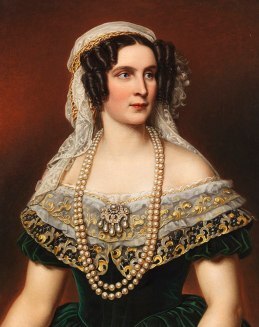 (public domain)
(public domain)On 12 March 1853, she managed to attend her son Luitpold’s 32nd birthday celebrations, but she later wrote of her fatigue. Later that spring, she travelled with her daughter-in-law, Auguste Ferdinande, to see an ophthalmologist, and she visited several family members along the way. She returned home at the beginning of July with a lung complaint. During the summer, cholera broke out in Munich. Theresa and Ludwig were in Aschaffenburg and only returned home when it was deemed safe. Nevertheless, Therese fell ill and died later that same day, on 26 October 1853.
Her husband wrote, “Within 12 hours from no danger to life to death! […] Her death was gentle, like your mother’s life; she fell asleep painlessly. If the doctor hadn’t said it, I wouldn’t have believed it. Her sons Luitpoild and Adalbert were also by her side, but Mathilde arrived too late. She later wrote, “The previous evening, I came and found only the soulless shell but with the expression of an angel.”1
The funeral took place on 31 October in the Theatine church, and she was temporarily interred in the crypt there. Ludwig had already decided that they should both rest in a side chapel of the St Boniface’s Abbey. He wrote, “If only I could be reunited with her immediately after death! Her life was pure; mine was not.”2 During the night of 9/10 March 1857, Therese’s body was transferred to St Boniface Abbey, where her body was initially placed directly under Ludwig’s intended sarcophagus. Following his death in 1868, Ludwid was interred there in March.
Click to view slideshow.It wasn’t until 2002 that Therese’s remains were removed from the crypt and placed in a wall tomb next to her husband’s sarcophagus so that they now finally lie side by side.
The post The tomb of Queen Therese at St Boniface’s Abbey appeared first on History of Royal Women.
March 14, 2024
The Delhi Durbar Tiara
The Delhi Durbar Tiara was made in 1911 for Queen Mary and was the centrepiece of an emerald and diamond parure for the Delhi Durbar ceremony, meant to mark the succession of an Emperor of India.
Embed from Getty ImagesThe entire parure included the tiara, a necklace, a stomacher, a brooch and earrings. Most of the diamonds were taken from a tiara by Boucheron in 1902. The emeralds came from a necklace that had belonged to Queen Mary’s grandmother, the Duchess of Cambridge. However, the emeralds were removed from the Delhi Durbar tiara in 1922 and were later converted to mounts, which could be used on the Vladimir tiara.
In 1912, the jeweller altered the tiara twice to take either or both Cullinan III and IV.
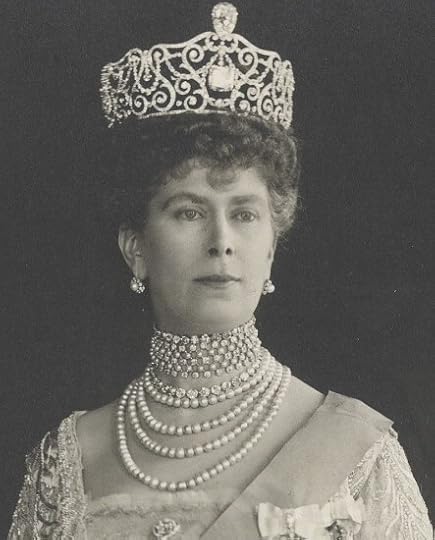 The Delhi Durbar Tiara including the Cullinan III (top) and Cullinan IV (public domain)
The Delhi Durbar Tiara including the Cullinan III (top) and Cullinan IV (public domain)Queen Mary loaned the tiara to the future Queen Elizabeth the Queen Mother in 1947 after undergoing slight alterations. It remained with her until her death in 2002. In 2005, Queen Elizabeth II loaned the tiara to the then Duchess of Cornwall.
Embed from Getty ImagesThe post The Delhi Durbar Tiara appeared first on History of Royal Women.
March 12, 2024
Time in the Tower – Arbella Stuart
Lady Arbella Stuart was considered a possible successor to Queen Elizabeth I as the great-great-granddaughter of King Henry VII of England. She was born in 1575, and she lost her father, Charles Stuart, 5th Earl of Lennox when she was still an infant. Her mother, Elizabeth Cavendish, died when she was seven years old. Her maternal grandmother then raised her.
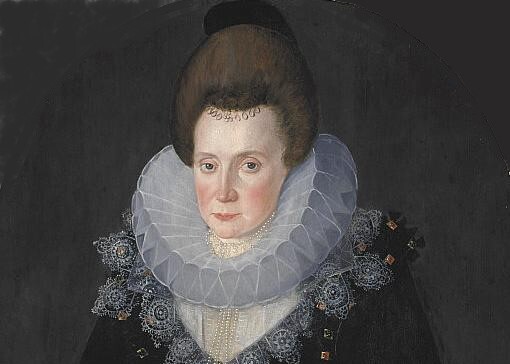 (public domain)
(public domain)Ultimately, King James VI of Scotland became King James I of England in 1603. Arbella was well-received at court, and she was treated as a princess. However, she made an enemy of the King when she planned to marry William Seymour, who later became known as Lord Beauchamp and later became the Duke of Somerset, without the permission of the King. This led King James to believe it might be part of an attempt to seize the throne. They married in secret on 22 June 1610 at Greenwich Palace.
It wasn’t long until King James found out. On 8 July, William was summoned before the privy council and subsequently imprisoned in the Tower of London. The next day, Arbella was committed to the custody of Sir Thomas Parry. At the end of the month, both were interrogated, and while William tried to deny it, Arbella confessed to the wedding. She later wrote to the King, “I most humbly beseech your Majesty… to consider in what a miserable state I had been, if I had taken any other course than I did; for my own conscience witnessing before God that I was then the wife of him that now I am, I could never have matched with any other man but to have lived all the days of my life as a harlot.”1
When King James learned that Arbella had been writing to her husband, he ordered that she be moved to Durham. Arbella was also informed that her husband was sentenced to life imprisonment in the Tower of London. In March, Arbella was to be moved to Durham, but she managed to delay in such a manner that the party had to stop at Barnet for several weeks. This delay led to a daring escape plan which would end in tragedy.
While William also managed to escape from the Tower of London, and Arbella managed to board a ship heading towards Calais, there was to be no happy reunion. Arbella’s ship was seized in the middle of the Channel. It was reported that “the royal ship proceeded to compel obedience by firing, but finding this useless she dispatched her frigate and as the sea was calm and the wind had dropped, about a league off Calais she came up with the Lady Arbella’s ship and instantly seized her without meeting the smallest resistance from her crew.”2 A few days later, William safely arrived in Ostend; by then, Arbella was a captive. And she was ordered directly to the Tower of London.
During the subsequent interrogations, Arbella claimed she just wanted to live freely with her husband and that there had been no plot to overthrow King James. It is not clear where Arbella was first held in the Tower of London and under what conditions. Any records would have been destroyed in a small fire at Whitehall. It has been suggested, and it seems likely, that Arbella was held in the royal lodgings in the old palace. She certainly had a kitchen where a servant could prepare food for her. However. she was kept a “close prisoner”, which meant that she did not have the freedom to leave her lodgings, wherever they may have been, and roam the complex of the Tower freely. One of her own servants was finally allowed to serve her after two years at the Tower.
Arbella was never brought to trial, and she continued to linger in the Tower. By 1613, she was seriously ill, although she appeared to have recovered from this illness. However, it seems that her mental health was deteriorating fast and even William, still abroad, received word that Arbella had become “distracted of mind whereby he knew that she could not live long.”3
By the end of 1614, Arbella took to her bed, and she would not allow the doctors to feel her pulse or inspect her urine. For the last year of her life, very little is recorded. She died on 25 September 1615, and the post-mortem suggests that she likely died from starvation. The report stated that her death was caused by “a chronic and long sickness […] which increasing as well by negligence as by refusal of remedies… by long lying in bed she got bedsores, and a confirmed unhealthiness of liver, and extreme leanness.”4
Her body was taken to Westminster Abbey, where she was buried in the tomb recently erected for Mary, Queen of Scots. King James refused to let the court go into mourning.
The post Time in the Tower – Arbella Stuart appeared first on History of Royal Women.
March 10, 2024
Empress Xiaojiesu – The pregnant Empress who was brutally beaten by her husband causing a fatal miscarriage
The Jiajing Emperor of the Ming Dynasty had four Empresses. However, each of them suffered at the hands of their abusive husband and met a tragic end. One of them was Empress Xiaojiesu, who was the first Empress of the Jiajing Emperor. Empress Xiaojiesu was said to be beautiful and knowledgeable.[1] When she showed her displeasure to her husband, he kicked her, causing her a fatal miscarriage. Empress Xiaojiesu’s tale is tragic because of the abuse that she suffered from her own husband.
In 1508, Empress Xiaojiesu was born in Darning Prefecture in Yuancheng District.[2] She was from the Chen family. Her father was Chen Wanyan, who was a talented scholar but failed all his imperial examinations.[3] Therefore, he remained a student until he was fifty.[4] Afterwards, he became a clerk of the Central Military Office.[5] Her mother’s name is unknown.[6] Lady Chen was said to be beautiful and talented.[7] At the age of fourteen, she entered the harem of the Jiajing Emperor.
Once she arrived at the palace, Lady Chen formed a close relationship with the Jiajing Emperor’s aunt, Empress Dowager Zhang (also known as Empress Xiaochengjing).[8] Empress Dowager Zhang chose her to be the Empress of the Jiajing Emperor.[9] Initially, the Jiajing Emperor was pleased with Empress Chen.[10] He liked her for her beauty and that she was close in age.[11] Gradually, the Jiajing Emperor began to have a hostile relationship with Empress Dowager Zhang.[12] Because of Empress Chen’s close relationship with her, he began to dislike her.[13] He ignored his Empress and openly favoured his concubines.[14]
In 1528, Empress Chen became pregnant. One day, she was having a conversation with the Jiajing Emperor. Consort Zhang (who would become the second Empress of the Jiajing Emperor) and Consort Fang (who would become the third Empress of the Jiajing Emperor) entered the room to serve the tea. As the Jiajing Emperor accepted the tea his consorts served him, he stared lustfully at them.[15] The fact that the emperor was lusting after other women in her presence enraged Empress Chen.[16] In a rage, Empress Chen threw her teacup to the floor and stood up to leave the room.[17] The Jiajing Emperor was furious that his Empress dared to express her outrage in his presence.[18] The Jiajing Emperor kicked Empress Chen several times, which caused her to miscarry.[19] Empress Chen never recovered from her miscarriage.[20] She died a month later.[21] Before her death, Empress Chen asked to see her mother, but the Jiajing Emperor refused.[22] Empress Chen was twenty years old.[23]
The Jiajing Emperor was still angry at Empress Chen and did not mourn her.[24] He gave her a hasty and simple funeral.[25] He gave her the posthumous name of Empress Daoling, which means “sorrowful spirit.” [26] In 1536, the Minister of Rites requested for Empress Chen’s posthumous name to be changed. The Jiajing Emperor agreed and changed it to Empress Xiaojielie, which means “filial and pure.” [27] In 1539, the Jiajing Emperor’s Yongling Mausoleum was completed. However, the Jiajing Emperor refused to let Empress Chen be buried beside him.[28] It was not until 1567 that the Longqing Emperor allowed Empress Chen to be buried beside the Jiajing Emperor in the Yongling Mausoleum.[29] The Longqing Emperor also gave her the posthumous name of Empress Xiaojiesu.
Empress Xiaojiesu was the first Empress to be neglected and suffered abuse from the Jiajing Emperor.[30] She was known to be a virtuous Empress.[31] However, her outburst caused her to lose her life. The other three Empresses of the Jiajing Emperor would also not have a happy end. Even though the Jiajing Emperor showed her very little favour in both life and death, the Longqing Emperor helped correct the mistakes his father made. Because of the Longqing Emperor, Empress Xiaojiesu was able to be buried beside her husband and was able to have her rights restored as the first Empress of the Jiajing Emperor.
Sources:
iMedia. (n.d.). “Peel the veil of history and see the mystery of the bizarre death of the first empress of Emperor Jiajing”. Retrieved 16 August 2023 from https://min.news/en/history/e9f72d3ee....
iNews. (n.d.). “Emperor Jiajing set up three queens in succession, each of them couldn’t end well, and the queens were unbelievable.”. Retrieved on 16 August 2023 from https://inf.news/en/history/fd25cd37d....
Lin, Y & Lee, L. X. H. trans. (2014). “Chen, Empress of the Jiajing Emperor, Shizong, of Ming.” Biographical Dictionary of Chinese Women, Volume II: Tang Through Ming 618 – 1644. (L. X. H. Lee, Ed.; A. D. Stefanowska, Ed.; S. Wiles, Ed.). NY: Routledge. pp. 28-29.
[1] iMedia, n.d., “Peel the veil of history and see the mystery of the bizarre death of the first empress of Emperor Jiajing”
[2] Lin and Lee, 2014
[3] iMedia, n.d., “Peel the veil of history and see the mystery of the bizarre death of the first empress of Emperor Jiajing”
[4] iMedia, n.d., “Peel the veil of history and see the mystery of the bizarre death of the first empress of Emperor Jiajing”
[5] iMedia, n.d., “Peel the veil of history and see the mystery of the bizarre death of the first empress of Emperor Jiajing”
[6] Lin and Lee, 2014
[7] iMedia, n.d., “Peel the veil of history and see the mystery of the bizarre death of the first empress of Emperor Jiajing”
[8] Lin and Lee, 2014
[9] Lin and Lee, 2014
[10] iNews, n.d., “Emperor Jiajing set up three queens in succession, each of them couldn’t end well, and the queens were unbelievable.”
[11] iNews, n.d., “Emperor Jiajing set up three queens in succession, each of them couldn’t end well, and the queens were unbelievable.”
[12] Lin and Lee, 2014
[13] Lin and Lee, 2014
[14] Lin and Lee, 2014
[15] Lin and Lee, 2014
[16] iNews, n.d., “Emperor Jiajing set up three queens in succession, each of them couldn’t end well, and the queens were unbelievable.”
[17] Lin and Lee, 2014
[18] iNews, n.d., “Emperor Jiajing set up three queens in succession, each of them couldn’t end well, and the queens were unbelievable.”
[19] iNews, n.d., “Emperor Jiajing set up three queens in succession, each of them couldn’t end well, and the queens were unbelievable.”
[20] Lin and Lee, 2014
[21] Lin and Lee, 2014
[22] Lin and Lee, 2014
[23] Lin and Lee, 2014
[24] Lin and Lee, 2014
[25] Lin and Lee, 2014
[26] Lin and Lee, 2014, p. 29
[27] Lin and Lee, 2014, p. 29
[28] Lin and Lee, 2014
[29] Lin and Lee, 2014
[30] iNews, n.d., “Emperor Jiajing set up three queens in succession, each of them couldn’t end well, and the queens were unbelievable.”
[31] iNews, n.d., “Emperor Jiajing set up three queens in succession, each of them couldn’t end well, and the queens were unbelievable.”
The post Empress Xiaojiesu – The pregnant Empress who was brutally beaten by her husband causing a fatal miscarriage appeared first on History of Royal Women.
March 9, 2024
The Year of Isabella I of Castile – The early years of King Ferdinand II of Aragon
The future King Ferdinand II of Aragon was born on 10 March 1452 as the son of King John II of Aragon and Navarre and his second wife, Juana Enríquez. At the time of his birth, he had an elder half-brother and two elder half-sisters from his father’s first marriage to Blanche I, Queen of Navarre in her own right.
Although upon Blanche’s death, the throne of Navarre technically passed to Ferdinand’s brother Charles, his father John had kept the power in his own hands. Charles would die in 1461 without ever having held power. The throne then passed firstly to Ferdinand’s elder half-sister, Queen Blanche II, who had returned home after a disastrous marriage and was promptly imprisoned. She died in 1464. Ferdinand’s second half-sister, Eleanor, perhaps knew better than to oppose him, and she only briefly succeeded officially as Queen of Navarre after Ferdinand’s death. The throne of Navarre would pass through Eleanor’s line.
John and Juana had another child after Ferdinand, a daughter named Joanna, who ended up marrying King Ferdinand I of Naples. Ferdinand himself was born in the town of Sos del Rey Católico, then just called Sos, and he too belonged to the House of Trastámara, to which his future wife also belonged. They were second cousins through a common descent from King John I of Castile and Eleanor of Aragon. As a younger son, he was not born to be a King, and he grew up in a politically difficult climate.
Following the death of Ferdinand’s brother Charles on 23 September 1461, the nine-year-old Ferdinand was sworn in as heir apparent of Aragon on 6 October 1461. He was then “conducted by his mother into Catalonia, in order to receive the more doubtful homage of that province.”1 He was later described as having “chivalrous valour, combined with maturity of judgment far above his years. Indeed, he was decidedly superior to his rivals in personal merit and attractions.”2
About his education, Ferdinand would later say that he had “seen much but read little.”3 He still had the basis of a classical education, and he was taught Latin by Francisco Vidal de Noya. However, he had his own horse from the age of eight and spent more time in the saddle than in the classroom. As his father became increasingly blind over the years, Ferdinand soon joined him on the battlefield.
The marriage between Ferdinand and Isabella had been on the cards when they were just children, but it had not happened then. Isabella, who was recognised as heiress by her half-brother in 1468, knew that Ferdinand was the right choice. Several suitors had already been considered for her, or rather yet, forced upon her. It thus took some secret manoeuvring for the marriage between Isabella and Ferdinand to take place.
The 17-year-old Ferdinand had already fathered a son, Alfonso, who was born in 1469. He had also been ceded the Kingdom of Sicily by his father in 1468. Yet, he took a chance on a Princess whose road to Queenship was not set in stone.
The post The Year of Isabella I of Castile – The early years of King Ferdinand II of Aragon appeared first on History of Royal Women.



